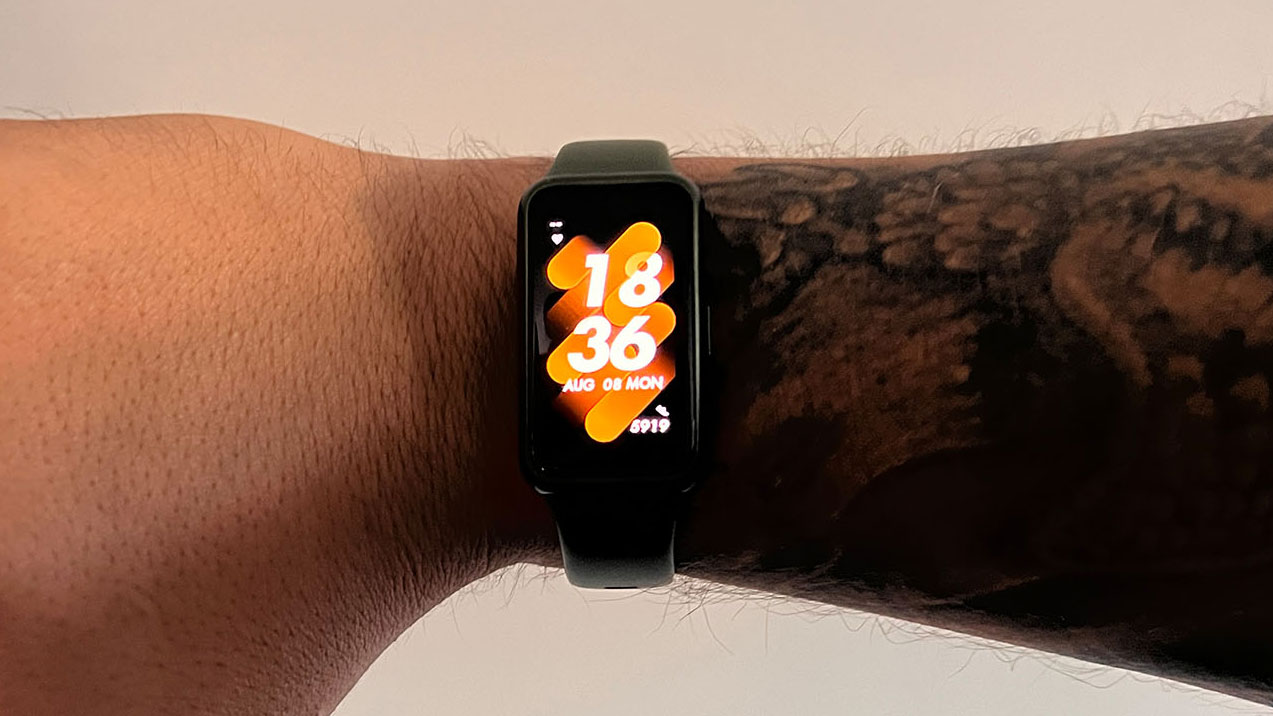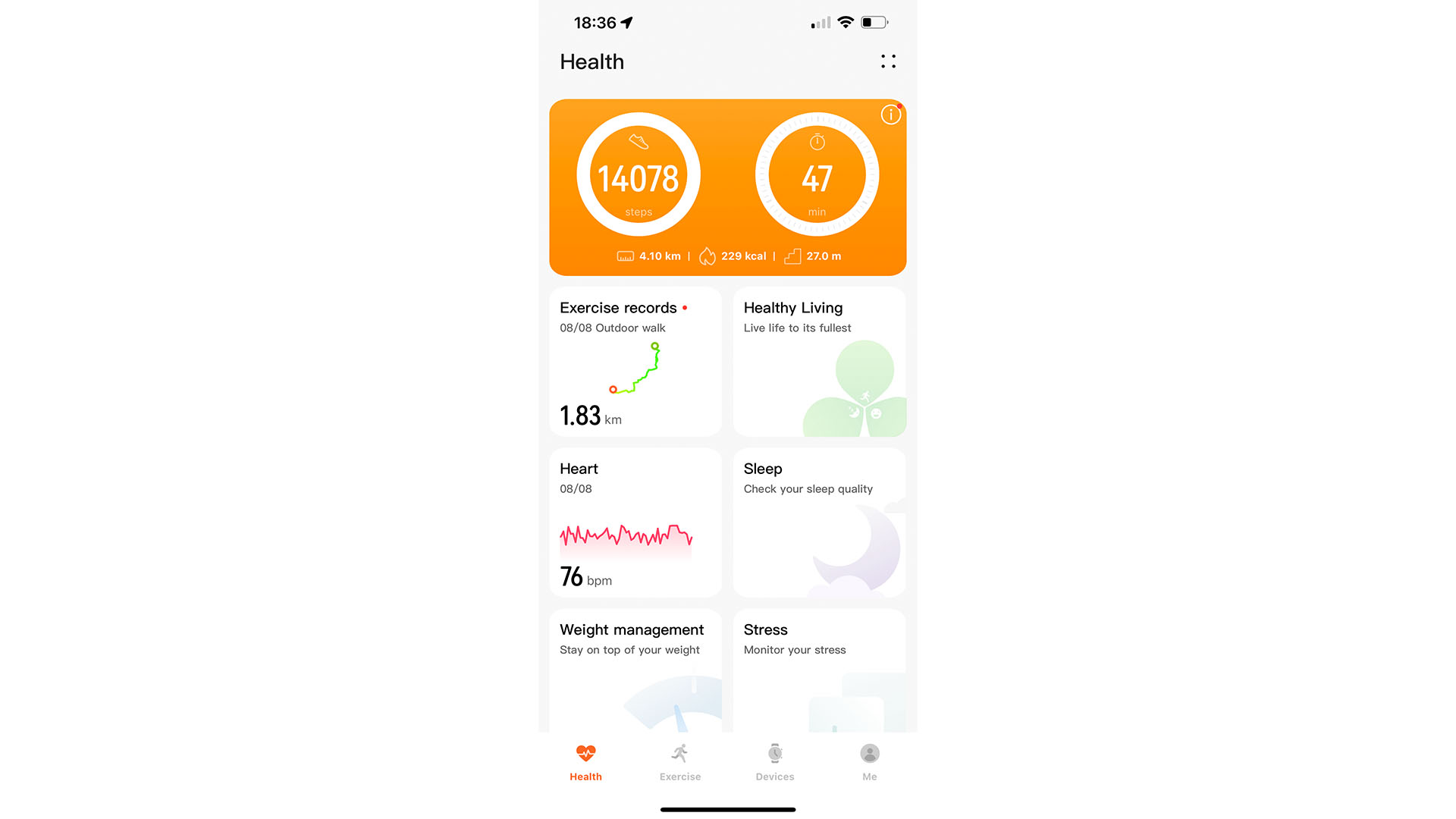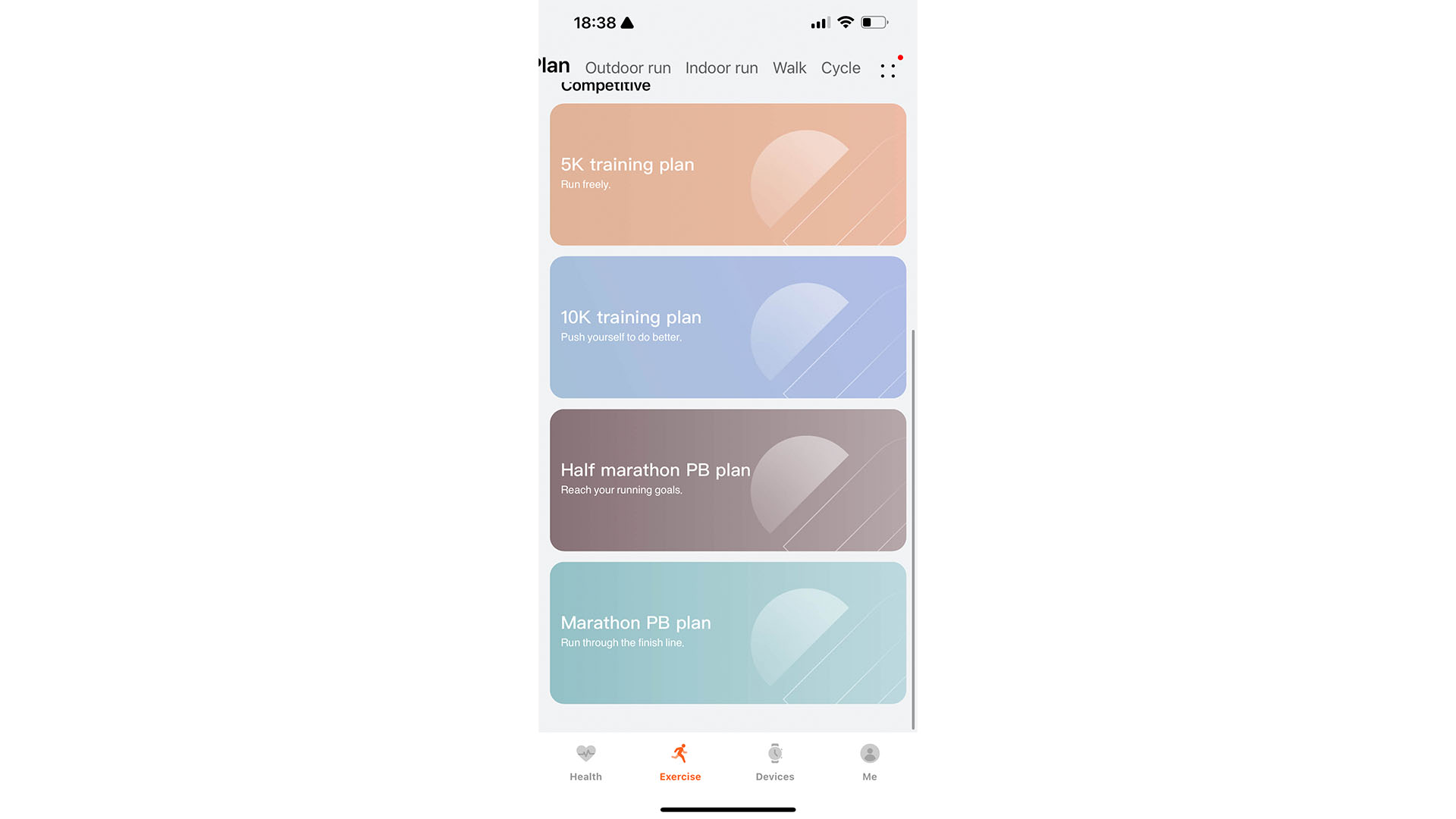Huawei Band 7
Huawei Band 7: Two-minute review
The Huawei Band 7 is an impressively affordable fitness tracker with plenty of fitness tracking features for a small price. It's not yet available in the US due to Huawei's ongoing dispute with the US government, but in the UK it retails for around £49.99 or AU$$159.00 in Australia.
In that regard, it’s a direct competitor to Fitbit’s dominance of the more affordable end of the spectrum, and goes toe-to-toe (or bezel to bezel) with the Fitbit Inspire 2. For the low cost of entry, though, users get access to a thin, light, and comfortable fitness tracker, with more sensors than the casual user is likely to need.
That includes blood oxygen readings, something previously reserved for pricer smartwatches, as well as the usual accouterments of step tracking, heart rate, and calories burned. It’s not a complete experience for those looking for something more malleable, though – while there are third-party watch faces that can be downloaded (and purchased), the Huawei Band 7 is a closed circuit as far as third-party integrations go, meaning there’s no Strava integration. It can write to Apple’s Health app, though.
There’s also sadly no Bluetooth playback or onboard storage either, meaning if you’re out for a run you’ll need to take your phone with you to listen to music. It also lacks GPS, but in testing its step counts and distance tracking were impressively accurate.
Still, if you’re starting your fitness journey, it’s hard to argue with the price here, and with a solid companion app as well that’s capable of setting a variety of fitness goals, there’s a lot to like for such a small outlay. It's certainly one of the best cheap fitness trackers around.
Huawei Band 7: Price and release date
- Available now
- Priced at £49.99 and AU$159
- Unavailable in the US
The Huawei Band 7 arrived earlier in 2022, and while it’s currently available in the US, you can pick it up for £49.99 / AU$159 in either Graphite Black, Wilderness Green, Nebula Pink, or Flame Red.
That makes it considerably cheaper than the Fitbit Inspire 2, which carries a price tag of $99.95/£89.99/AU$179.95.
Huawei Band 7: Design
- Available in Graphite Black, Wilderness Green, Nebula Pink or Flame Red
- Impressive AMOLED display
- Customizable watch faces
It’d be fair to say that at quick glance, the Huawei Band 7 looks like just about any other fitness tracker. Our review unit is the Wilderness Green version, and looks like a squarer, wider Fitbit Inspire 2.
The star of the show here is its AMOLED display, which offers a 1.47-inch display that’s flatter than some competitors, but never feels unwieldy thanks to the thin body that measures just 9.99mm thick. Huawei is calling the Band 7 bezel-less, and it’s hard to argue simply because of the deep black around the outside of the display. In fact, we’d wager if there were bezels, you wouldn’t see them anyway.
Without the strap, the Huawei Band 7 weighs just 16g, and you can reattach and remove straps with ease using the pins underneath. In terms of controls, there’s just one side button for navigation, and everything else is handled through the touch screen.
Charging, as you may expect, is done through a small block with a USB-A attachment, but there’s no power brick included. We’re also sorry to say that fitting the charger is a little more fiddly than Fitbit's satisfying “snap”, but we did get used to it after a few days.
- Design score: 4/5

Huawei Band 7: Performance
- Two-week battery life
- Heart-rate sensor, SpO2 and more.
- A fitness tracker, not a smartwatch
To set expectations, it’s worth noting that the Huawei Band 7 is a fitness tracker as opposed to a fully-fledged smartwatch. Between the thin, small display and lack of third-party apps and music playback, it’s not as feature-heavy as other full smartwatches like the Huawei Watch GT 3.
The advantage of this, though, is that the Huawei Band 7 can hone in on its specialisms and really nail what it does well – starting with the battery. Despite the small chassis, there’s a two-week battery life here, which quite frankly makes a lot of competitors look almost laughable in comparison.
That’s not to say it’s not working hard, either – heart-rate monitoring is regular, and in our time testing we found its step-tracking to be just as accurate as an Apple Watch that costs magnitudes more on the other wrist. In fact, the Sp02 monitoring, which is usually a more active process on other watches, is constantly running here, with Huawei dubbing the blood oxygen and heart rate monitoring process TruSeen 4.0.
On a similar note, TruSleep 2.0 tracks sleep states and offers a more detailed breakdown of phases of sleep compared to Apple’s own metrics.
As noted earlier, though, the lack of onboard storage with which to shuttle a few songs or a podcast to will mean that those that prefer working out to music will be a little left out here, while runners may want to opt for an alternative with GPS tracking so they can be untethered from their smartphone.
- Performance score: 4/5
Huawei Band 7: Companion App
- iOS and Android compatible
- Simple, but perhaps lacks detail
While the Huawei Band 7 is tied to a phone, thankfully the Huawei Health app is a very impressive bit of kit. Once logged in, it presents a dashboard of steps and workout minutes, as well as “at a glance” looks at heart rate, distance traveled, and any specific plans to help you reach what Huawei calls Health Goals.
With options ranging from blood pressure management to weight management, the app can set specific training metrics to help reach your goals. We tried the weight management option and were told to get our steps up to improve metabolism. If you’re new to fitness, it’s a great set of “training wheels” but can actually go much further.

That’s because there are specific plans for exercises that can help you stop getting out of breath running for a bus, on to fun runs, and then half and even full marathon plans. When starting out with running, having the next “level” to reach can be a huge help, and this taps into that while also logging your progress.
Even better, everything is written to Apple’s own Health app, meaning there’s a central spot for all of your data.
- Companion app score: 4/5

0 comments:
Post a Comment